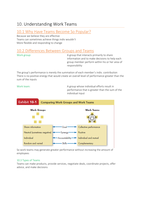Samenvatting
Book Summary: Organization Behavior by Robbins and Judge (17th ed.) Chapter 10,11,12,13,14,15,16 and 18
Summary of the book Organizational Behavior by Robbins and Judge the 17th Edition: Chapter 10,11,12,13,14,15,16 and 18 (with images used in the book).
[Meer zien]



